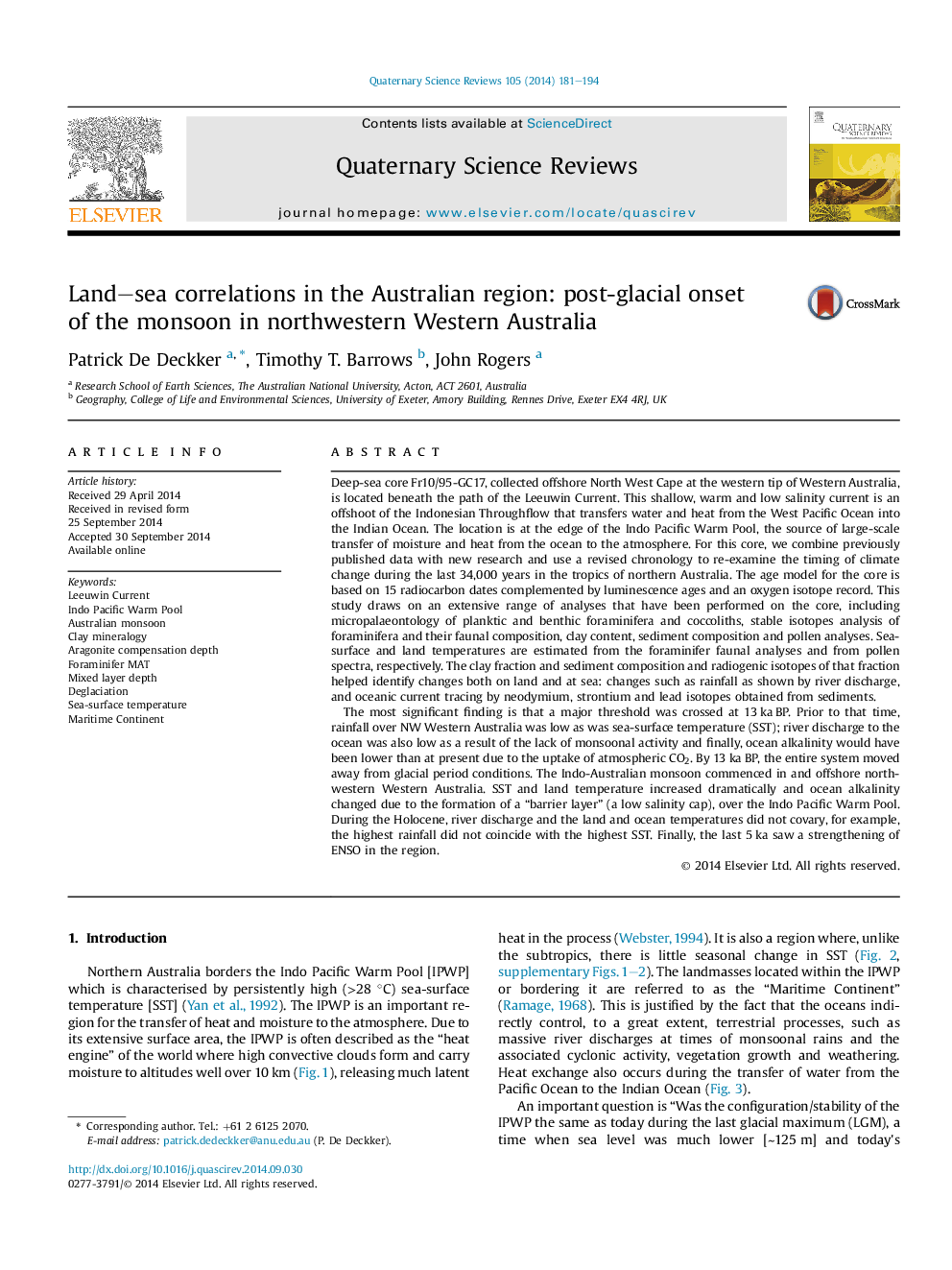| Article ID | Journal | Published Year | Pages | File Type |
|---|---|---|---|---|
| 6446122 | Quaternary Science Reviews | 2014 | 14 Pages |
Abstract
The most significant finding is that a major threshold was crossed at 13 ka BP. Prior to that time, rainfall over NW Western Australia was low as was sea-surface temperature (SST); river discharge to the ocean was also low as a result of the lack of monsoonal activity and finally, ocean alkalinity would have been lower than at present due to the uptake of atmospheric CO2. By 13 ka BP, the entire system moved away from glacial period conditions. The Indo-Australian monsoon commenced in and offshore northwestern Western Australia. SST and land temperature increased dramatically and ocean alkalinity changed due to the formation of a “barrier layer” (a low salinity cap), over the Indo Pacific Warm Pool. During the Holocene, river discharge and the land and ocean temperatures did not covary, for example, the highest rainfall did not coincide with the highest SST. Finally, the last 5 ka saw a strengthening of ENSO in the region.
Keywords
Related Topics
Physical Sciences and Engineering
Earth and Planetary Sciences
Geology
Authors
Patrick De Deckker, Timothy T. Barrows, John Rogers,
